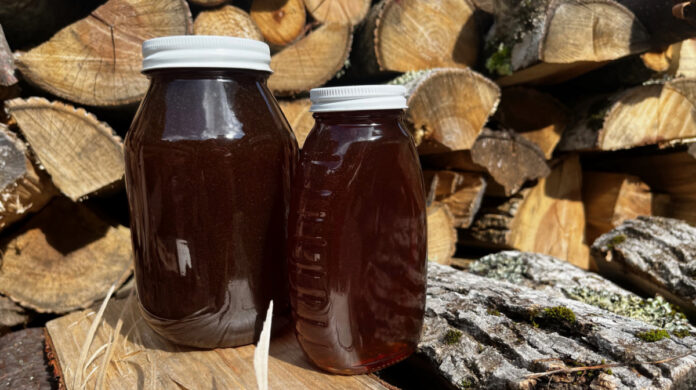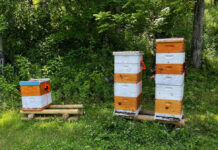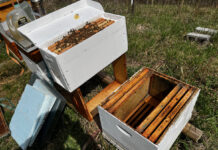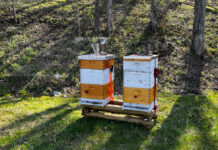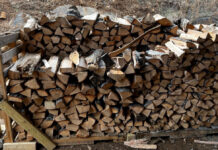The spring honey harvest is complete, and it yielded some of the tastiest honey I have ever produced. Of the 125 pounds we harvested, about 80 was a very dark, rich honey with a toffee taste with hints of anise. I suspect this is from the Tulip Poplar tree, which produces a dark rich honey. This batch is a complex blend of subtle flavors that is unlike any honey I have tasted before.
Sadly, I may not get another harvest like this for years. Every harvest is different because the weather and the tree and flower blooms are always different, but I’ll enjoy it while I can.
The rest of the harvest was very much in the same vein as our normal spring honey harvest, but with a darker color. It is a traditional floral honey that finishes with a bit of a zing or tingle. It’s good stuff, but I’m jaded because it’s similar to what we harvest every year.
As good as the honey is, my presales are even better. Before the jars were labeled, I delivered 82 pounds of it to my retailers, netting me more than $800. We’ll give up to 20 pounds to friends and family, and the remainder will be sold direct at an average of $15 a pound, depending on the size of the container.
The Out Yard
This weekend, I completed the electric fence around the new yard. Although there are only three hives there, I made it big enough to easily hold eight with an upper limit of twelve hives. We’ll just see how much bigger I want to grow. Last year, I didn’t think I wanted more than six or eight hives. Now I have ten, and I’m having fun. Who knows? Maybe 12 or more are in my future.
Having two apiaries allowed me to capture two different flavors of honey this spring. Next year, I plan to put even more hives in our new bee yard, which is 800 or 1,000 feet lower in elevation. It produced more honey per hive than my home apiary, so I want to capitalize on that. It will be interesting to see how well it does in the fall harvest, which is usually our largest. We’ll harvest again around Labor Day.
Some of the Japanese Knotweed, an invasive species that grows alongside the roads and is sometimes referred to locally as “ditch weed,” is already blooming. This is well ahead of its normal schedule. The bees visit the blooms, but I don’t know how much it contributes to our late-summer honey harvest. It will be interesting to see how this affects the fall harvest, if at all. I am curious to see if the golden rod also blooms early. I usually leave the goldenrod honey for the bees to eat over the winter because it has a peculiar flavor. If everything booms early, I may need to harvest earlier than normal.
Cleaning Up
Processing honey is sticky work. We get honey on our hands, which then transfers to doorknobs. We get honey on our shoes, so we have to take them off every time we go inside. All the honey processing tools and appliances end up sticky.
My favorite method of cleaning up after the honey harvest is to let the bees do most of the work. I moved the supers out to the far end of the driveway when we finished extracting so the bees could enjoy the last little bit of honey stuck to the comb. The next day, I toted the extractor out there, too. Once we filled our bottles and jars, the 5-gallon buckets, sieves, and screens were next. The de-capping tank was the last item to make it outside.
Of course, I still have to clean the equipment when the bees are done. They do a good job capturing every last drop of honey, but there is often wax which has to be scraped up or blasted off by a hose. And then, finally, we wash the concrete floor in the garage, which is where we do our processing.
The entire process, from picking up the extractor, pulling honey off the hives, extracting it, bottling it, cleaning up, and returning the extractor fill most of a week. One day in the future, I may get my own honey extractor. I’d need more hives and a larger harvest to justify the cost, so that may be two or three years down the road.

